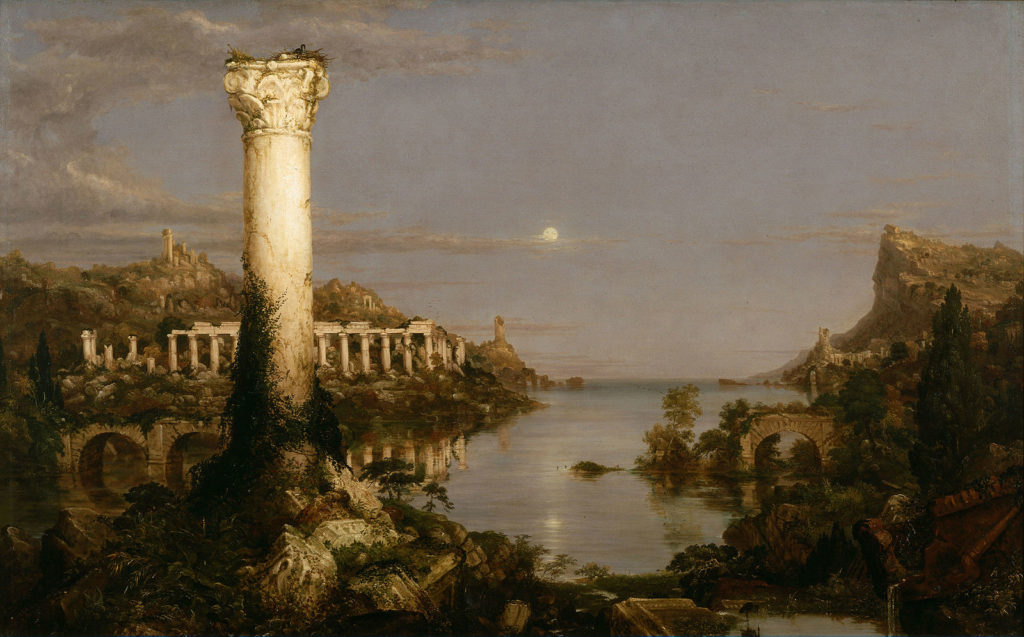
If you had tell a story extending hundreds or thousands years into the future, what would that story look like? If you’re like many of today’s writers of climate-change novels, you might tell a story in which only tattered remnants of society hang on, struggling to survive in a world where plants and animals we are familiar with have died off, where large portions of the planet aren’t fit for human habitation, where the wealthy monopolize dwindling natural resources.[1]

Thomas Cole’s The Course of Empire: Desolation (1836)
Apocalyptic narratives like these are powerful and fascinating. “Apocalypse” derives from the Greek word ἀποκαλύπτειν, to “uncover” or “disclose,” and the history of apocalypse stories is one in which wise prophets foretell the end of the world, often as retribution for humanity’s sins. This narrative pattern is deeply engrained in Western culture, so it’s not surprising that many stories about climate change consciously or unconsciously draw on apocalyptic tropes.
But there’s another kind of story you could tell instead. What if the story of climate change is more like the myth of Prometheus, in which human invention and technology lead to progress? Perhaps just as Prometheus (whose name means “forethinker”) stole fire from the gods, we will find a technological solution to climate change. Injecting aerosols into the atmosphere, launching giant space mirrors, sucking carbon out of the sky: some “ecomodernist” environmentalists are telling utopian stories about a “good Anthropocene” in which humanity will re-engineer the entire planet.[2]
Eco-apocalypse or eco-utopia? Eco-apocalypse makes for a compelling story but it could have dangerous consequences: if the planet is doomed anyway, why should we do anything at all? But eco-utopianism is risky, too: do we really want to place all of our faith in capitalism and technology? How do we know we’re not opening Pandora’s box? Climate change may call for a third type of narrative, neither inevitable disaster nor mythical heroism, but instead smaller and more open-ended stories of precarity, survival, and collaboration.[3]
The stories we tell about climate change matter because narratives shape our experience of the present, both enabling and limiting courses of action. Anthropogenic climate change is unprecedented, but in order to address the Futures Design Challenge, you may find it useful to call upon ancient narrative patterns. Stories have the potential to reach large audiences, but this is all the more reason to think carefully about the kinds of stories we tell. What will your story be?
[1] An especially good novel along these lines is Claire Vaye Watkins’s Gold Fame Citrus (2015), set in a future California that has become a vast desert.
[2] See for instance “An Ecomodernist Manifesto,” http://www.ecomodernism.org/
[3] Anna Tsing’s book The Mushroom at the End of the World: On the Possibility of Life in Capitalist Ruins (2015) proposes some alternatives to narratives of progress or disaster.

